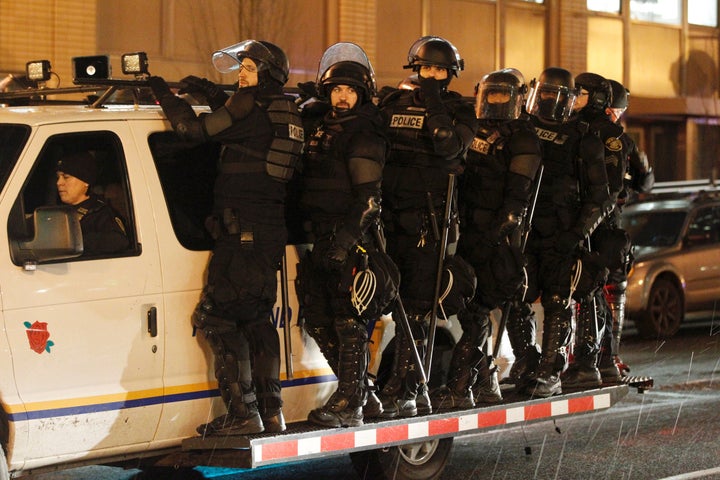
Despite the screaming headlines during his Administration and today, President Obama never banned the acquisition of needed military equipment by state and local law enforcement agencies. This is just more of the false, over-heated rhetoric of those in the law enforcement community who also claimed that President Obama, despite giving billions of dollars to local law enforcement agencies, was engaged in a war on police. And, it is yet another alternative fact from Attorney General Sessions’ Department of Justice.
Let’s start with what really happened. The Obama Administration established a working group of career officials representing the federal agencies involved in the provision of equipment to local law enforcement. It was clear, based on images from Ferguson and elsewhere, that equipment was being misused in a way to intimidate people from exercising their First Amendment rights. Is it important to dress in wilderness camouflage to serve and protect urban communities? Also, the Department found officers using full SWAT gear to investigate routine housing code violations. The Administration took up this effort with the goal of improving law enforcement and community relations in a way that would increase trust and safety for both.
“Most of the law enforcement organizations that we met with agreed that their members did not need this equipment."”
The working group asked these federal agencies to review what they were providing and how they were providing it. This working group also sat down with representatives from all of the major law enforcement organizations and community and civil rights representatives. A Report issued in December 2014 described a disorganized set of programs that lacked consistency in how they were “structured, implemented and audited.” The working group found that the programs completely lacked transparency such that community members had no idea what equipment their law enforcement agency possessed and just as importantly, police departments did not know what other departments nearby might have in case they needed a piece of equipment in the event of an emergency.
After numerous additional meetings with stakeholders, the working group came up with an incredibly limited list of equipment that it felt the federal government did not need to be providing to local law enforcement. Most of the law enforcement organizations that we met with agreed that their members did not need this equipment. The entirety of the prohibited list consisted of Tracked Armored Vehicles; Weaponized Aircraft, Vessels and Vehicles; Firearms and Ammunition of .50 Caliber or higher; Grenade Launchers; Bayonets; and Camouflage Uniforms. That’s it.
Beyond that, the working group created a controlled list of equipment in which it asked local law enforcement to simply be accountable for their use of the equipment. Since the equipment was paid for by taxpayers, the working group felt that it was reasonable to ask local law enforcement to explain how the equipment was being used. No agency was ever prevented from obtaining any piece of equipment from the controlled list.
The rest of the effort was aimed toward making sure that the federal agencies were looking for ways to streamline and make consistent the manner that local law enforcement acquired the equipment.

I worked closely with the working group and was present when we repeatedly asked the law enforcement agencies to provide specific examples of why they needed equipment from the prohibited list. The vocal minority of organizations that insisted on getting this equipment could never come up with reasonable examples. They just insisted that they needed it and the federal government had no right to tell them no or ask questions about how they used the equipment. We made it clear that we would regularly reconsider what was on the list based on the needs of local law enforcement and even made changes based on reasonable requests.
Attorney General Sessions’ speech today to the Fraternal Order of Police, like many of his speeches, is full of inaccurate or cherrypicked statistics (for example, failing to note that the number of officer deaths under President Obama was at historic lows, or that the Gallup Poll on confidence in police was at 56 percent (compared to 57 percent now) and rising at the end of the Obama Administration). And when Attorney General Sessions claims that going back to the old way of giving equipment to local law enforcement agencies “reduces crime rates, reduces the number of assaults against police officers, and reduces the number of complaints against police officers,” he is being intentionally misleading. While acknowledging that the benefits from receiving any federal equipment is “small,” neither cited study has anything to do with the prophylactic changes made by the Obama Administration because the studies do not attempt to and cannot measure the limited, specific changes made.
As someone who has spent the bulk of his career working closely with law enforcement, I recognize the challenges and importance of their work. A lack of free equipment from the federal government is not one of those challenges.
